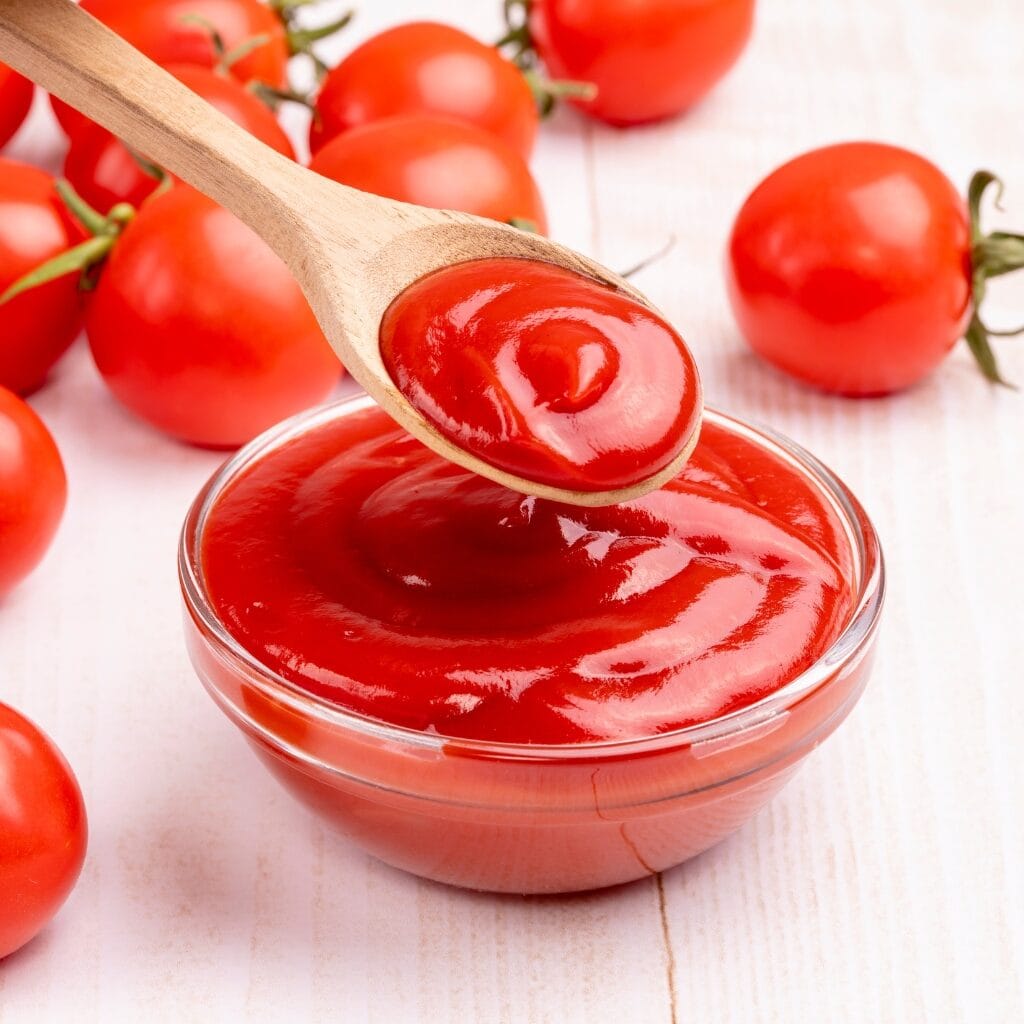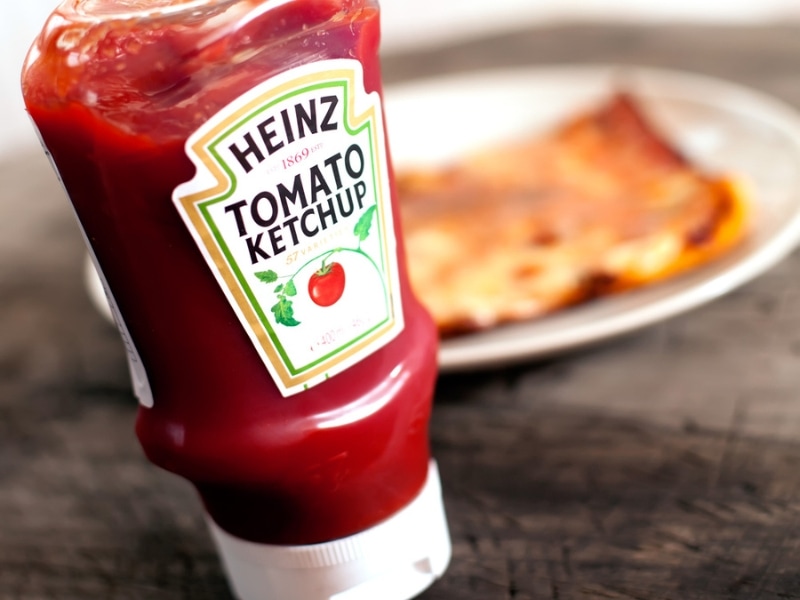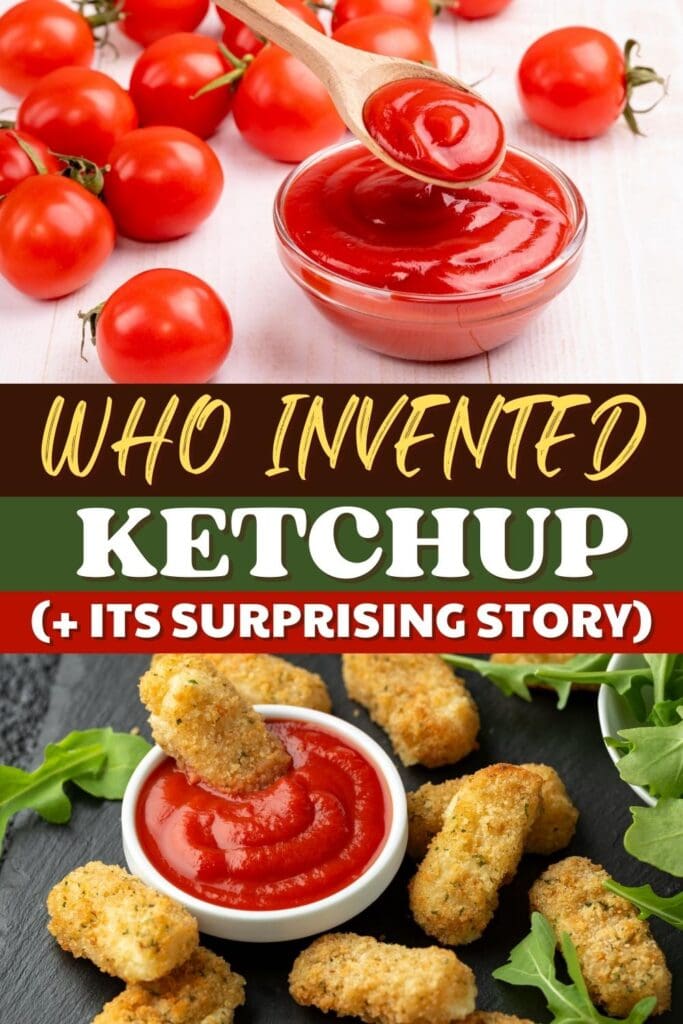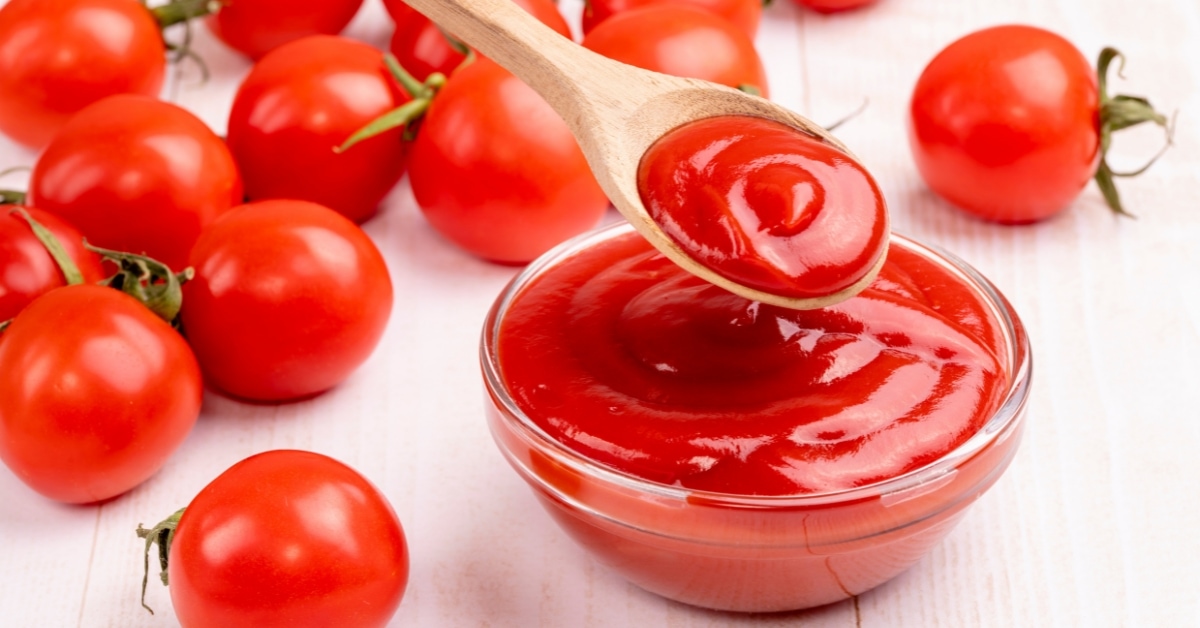The first tomato-based ketchup emerged in 1812. It was invented by American scientist, James Mease. He referred to tomatoes as “love apples” because he believed they had aphrodisiac properties.
However, the condiment’s beginnings actually date back to ancient civilizations.

Hold on to your fries, because ketchup’s origin story is more adventurous than you could imagine.
It’s a centuries-old journey with surprising twists and turns that’ll make you see this beloved condiment in a whole new light.
Read on to learn the amazing story.
The History of Ketchup
The history of ketchup takes us on a long journey from ancient China to England and America.
Ketchup has evolved into a beloved condiment with a fascinating and diverse origin story. So here’s the big surprise: the first ketchup didn’t actually contain tomatoes. Cue gasp!
Instead, it was a Chinese fish sauce called “ge-thcup” or “koe-cheup.”
This fishy paste, hailing from the Fujian province of China, was made from fermented fish entrails and soybeans.
So, if you had your bets on ketchup being an American invention, you were mistaken!
Hokkien Chinese traders would take these sauces to Malaysia and Indonesia. Here, the sauces earned the names “kechap” and “ketjap.”
From Southeast Asia, this saucy sensation began its global journey, eventually landing in the hands of British sailors.
They were quite taken by the Chinese fish sauce with its strong flavor and impressive shelf life. They were so smitten with this exotic condiment, they just had to take it back to England.
However, as they attempted to recreate it in the early 18th century, the recipe underwent some wild transformations. One quirky recipe from 1736 suggested making the condiment by boiling two quarts of stale beer and half a pound of anchovies. This mixture was then left to ferment.
It sounds odd today, but back in the day, it was just another creative spin on ketchup’s diverse lineage.

The Golden Age of Ketchup
The 18th Century was the ketchup era.
When the British sailors brought the sauce back to England, it created a culinary frenzy. But the original ingredients weren’t readily available in England.
This led to some creative interpretations. The British tried to replicate the flavor using ingredients like mussels, oysters, and walnuts.
Some recipes even had peaches and plums! There was also a fancy “Prince of Wales” ketchup, made with elderberries and anchovies.
These ingredients were simmered down to syrup or salted and left to marry for some time. The result was a flavor-packed, salty, and spicy concentrate that refused to spoil.
And though these concoctions may have been intense flavor-wise, their long shelf life made them quite popular.
Here’s another fun tidbit. Jane Austen, the famed author of Pride and Prejudice, had a soft spot for mushroom ketchup!

Why No Tomatoes?
It’s fascinating how this condiment took on so many variations before the tomatoes finally took center stage.
So, you might be scratching your head, thinking, “Where are the tomatoes?” Funny enough, English people thought tomatoes were dangerous business!
When tomatoes first arrived in England in the 1500s, people thought they were poisonous. They were mostly seen as decorative garden plants.
The belief wasn’t entirely baseless, as the acidity of tomatoes could leach lead from pewter plates, causing lead poisoning.
The Invention of Tomato Ketchup
Now, let’s cross the Atlantic. In 1812, an American named James Mease had the innovative idea to incorporate tomatoes in ketchup.
Again, he referred to tomatoes as “love apples” due to their alleged aphrodisiac properties.
And here’s another intriguing fact: Mease’s recipe included alcohol. It seems surprising today. But it was a nod to how the British were making ketchup a century earlier.
So, it took some time for tomatoes to become the stars of the ketchup show. But once they did, there was no turning back.

Towards a Standardized Tomato Ketchup
As the 1800s progressed, tomato ketchup gained popularity. However, preservation was a significant challenge due to the tomatoes’ short growing season.
To extend shelf life, manufacturers often added artificial preservatives like sodium benzoate and coal tar. This raised health concerns among consumers.
In comes Henry Heinz, the man with a vision for safer ketchup. His game-changing idea in 1876 involved using riper tomatoes, which contained more natural pectin.
This helped in preserving the ketchup. But it also improved its quality. Heinz also added distilled vinegar, brown sugar, salt, and spices.
The iconic glass bottles were a strategic move since people doubted ketchup’s safety. Heinz’s transparent glass bottles signaled transparency and quality.









